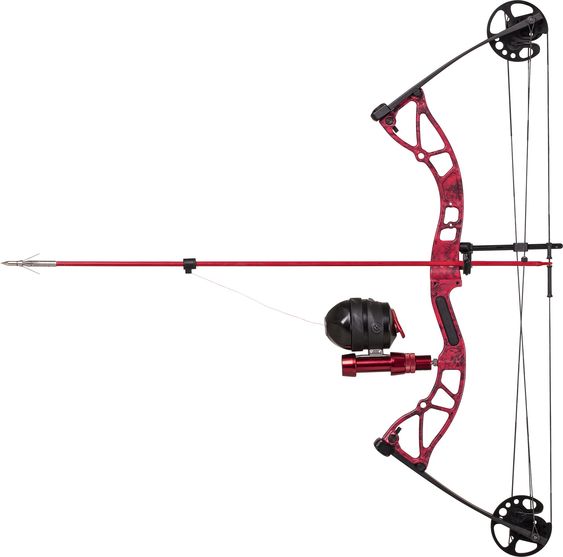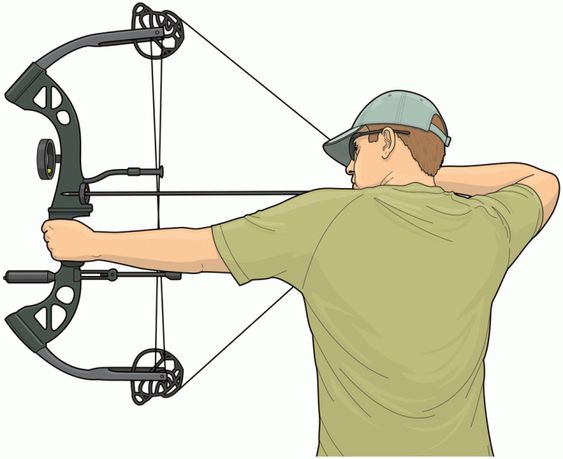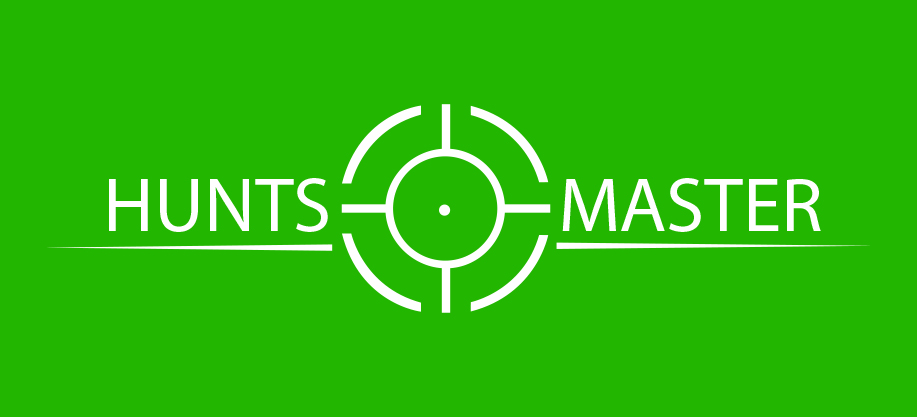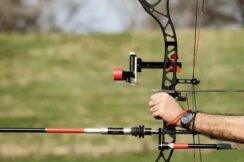Are you a big fan of shooting and always want to hit the target perfectly? That’s great, because you probably already know that having a compound bow is only the start. It is very important to learn how to tune a compound bow correctly if you want to improve your aim and get better at shooting.
This complete guide will show you all the steps you need to take to make sure your compound bow is perfectly tuned, so you can shoot like a pro with unmatched accuracy.
Get ready to learn the tips that will change the way you shoot bows permanently!
Importance of Properly Tuning a Compound Bow

For precise and accurate shooting, it’s important to tune a compound bow the right way. If you tune your bow right, the shot will fly straight, which will cut down on errors and improve performance overall. In other words, it means hitting targets regularly and reducing the chances of missing shots.
Adjusting things like draw length, draw weight, cam timing, and arrow rest position are all part of tuning.
For example, setting the arrow stop makes sure that the arrow is lined up correctly with the bowstring, which means that it doesn’t move side to side or up and down during the shot. These changes can have a big effect on the archer’s ability to shoot straight every time.
Step 1: Choosing The Right Bow and Equipment


Selecting the Right Compound Bow
It’s important to think about your wants and tastes when choosing a combination bow. First, figure out your draw length and draw weight. These will have a direct effect on how well you shoot and how comfortable you are doing it.
You should think about the bow’s axle-to-axle length, brace height, and the type of cam system it has. These things affect how well and forgivingly the bow works generally. Know this: It’s a process that’s unique to each person; what works for one person might not work for you.
Try out a few different types and talk to a professional to make sure you get the bow that works best for you.
Important Tools for Tuning a Bow
You need to make sure you have the right tools to tune a compound bow. If you want to work on the bow’s parts, you need a good bow press. A bow level makes sure that the bow is straight. An arrow level helps make sure that the arrows always fly straight.
To make sure the string and limbs are straight, you need a good bow square. A stopwatch can help you tune and measure the speed of a shot. A draw length scale makes sure that the right draw length is set.
You can check the draw weight with a bow scale. Finally, a paper tuning rack lets you fine-tune the way your arrows fly.
Step 2: Setting Up Your Bow


Installing the Bow Accessories
It’s important to be very careful when putting down bow items. Take the time to make sure the items are lined up correctly and that they are tight. For sight, make sure the pins are set to the lengths you want.
It is best to place stabilizers in a way that keeps tremors to a minimum. Rests should be changed so that the arrow’s path is perfectly clear.
Finally, add a D-loop for smooth release. So, remember that little changes can make a big difference. Take your time to get it right. Throughout the process, keep your attention on correctness and regularity.
Making changes to the draw length and weight
The draw length and draw weight need to be changed in order to tune a compound bow correctly. To change the draw length, you need to find the setting that lets you fully extend your arm while still holding the bow handle in a relaxed way.
The draw length can be changed by removing the bolts on the cam modules and moving them forward or backward.
If you want to change the draw weight, you need to find the right amount of force to pull back and hold the bow at full draw. You can change this by changing the limb bolts to add or remove weight.
To get the most accurate shots, don’t forget to make small changes and test the bow’s performance after each one.
Setting Up the Rest
Setting up the rest on your compound bow is a key part of getting shots that are accurate and reliable. The rest should be set up so that the arrow fits exactly on it. This will make sure that the arrow is in the right place on the bow. It should also give the arrow the support it needs while it is being drawn and let go. A properly set rest can help fix problems with arrow flying, like fletching touch or arrow clearance.
Try out different types of rests, like drop-away and full-capture rests, to find the one that works best for the way you shoot and the way your bow is set up.
Setting up and adjusting the sight
Setting up and adjusting the sight is a key part of making your compound bow as accurate as possible. To begin, make sure the sight is firmly attached to the bow and in line with the arrow rest.
Next, move the sight pins around so that they line up with your subject at different distances. Fine-tuning the sight means trying out different pin settings and taking things like windage and elevation into account.
To make up for it, if your shots always hit to the left of your target, you can move the sight pin to the right. Check the sight often and make any necessary adjustments to keep it accurate.
Step 3: Fine-tuning Your Bow
Cam Timing and Synchronization
The timing and alignment of the cams are very important when setting a compound bow. The cam timing is how the cams are lined up and placed in relation to the bowstring and each other. When syncing is done right, both cams move at the same time and produce the same amount of power.
This makes the arrow fly more consistently and more accurately. To check the time of the cams, watch how each one turns when it’s fully drawn and make changes as needed.
To get the cams to work together, you can set the control wire and joint so that both sides have the same amount of force. To keep the bow working at its best, the cam speed and alignment should be checked and changed on a frequent basis.
Adjusting Limb Stops and Cable Stops
Adjusting limb stops and cable stops is an integral part of tuning a compound bow. It helps to fine-tune the draw cycle and achieve optimal performance. Here’s how to do it effectively:
- Start by checking the limb stops and cable stops’ alignment with the cam modules or draw length modules.
- Use an Allen wrench to make small adjustments to the limb stops or cable stops as needed.
- Ensure that both stops make contact simultaneously, creating a symmetrical draw cycle.
- Experiment with different settings to find the sweet spot that provides a smooth draw and maximum energy transfer.
- Regularly check and readjust the stops to maintain consistent performance.
Remember, adjusting limb stops and cable stops requires patience and experimentation to find the perfect balance for your specific bow setup.
Paper Tuning Your Bow
To tune your compound bow, you have to do something called “paper tuning.” To make changes, you have to shoot through a piece of paper and look at the tear pattern. This way, you can be sure that your shot will fly straight and true.
It is best to have a clean, level tear where the point of the tear lines up with the center of the bow. If the tear is fishtailing or at an angle, the seam may need to be adjusted to fix any problems. The bow works better and is more accurate when you use this easy method.
Tuning a Bare Shaft
A good way to fine-tune your compound bow is to tune the bare shaft. It includes shooting bare shafts, which don’t have any fletching on them, to find any problems with form or tuning. These bare shafts’ flight traits can help you make changes to how your bow is set up.
For instance, if a bare shaft always leans to the right, you might need to change your arrow stop or nocking point. This helps make things more accurate and consistent.
You can also get better at bare shaft tuning by trying out different arrow shafts, spine weights, and bow accessories. Regularly using this method will help your compound bow work better.
Step 4: Optimizing Your Accuracy
Perfecting Your Anchor Point
For effective shooting, you need to get your pivot point just right. Your anchor point is the spot on your face, usually near your chin or cheekbone, where you always pull your bowstring back before letting go of the shot.
Having a stable fixed point is important because it helps you keep the same line and aiming point every time you shoot.
To find your best support point, move your chin or cheekbone around a few times and see which one feels the best and gives you the best results every time.
To improve your aim and build muscle memory, draw your bowstring back and back to your anchor point over and over again once you’ve found it.
Use of the Right Grip and Hand Position
To tune a compound bow, you must have the right grip and hand placement. The grip should be strong but not tight, and the web between the thumb and index finger should be pressed against the back of the grip. This makes sure that you always have stable control over the bow.
Additionally, the position of the hand on the bowstring should be the same for each shot. Keeping your fingers on the string in the same place helps you stay accurate and makes sure you always let go.
Archers can improve their shot form and get more accurate and regular results by learning the right way to hold the bow and where to put their hands.
Getting good at your release technique
To get the most accurate results when setting a compound bow, you must master your release method. When you let go of the bowstring to let the shot go, that’s called “release.”
For constant shot placement, you need a release that is smooth and uniform. Focus on keeping your grip on the bow loose and using a steady, controlled release move to improve your release technique. Try out different kinds of releases until you find the one that works best for you.
To prevent any movement from messing up your shot, always follow through after you let go.
Wrapping up
Anyone who likes shooting and wants to get better at using a compound bow will find this final guide very helpful. The article shows you how to properly tune a compound bow, including important steps like changing the draw length, fine-tuning the cam system, and finding the best position for the arrow rest. It stresses how important a properly tuned bow is for making steady, accurate shots.
The guide also talks about how to choose the right arrows, set the sights, and fix common problems to improve total gun performance.
This complete guide has important tips and methods to help you get the most out of your compound bow, no matter how much experience you have or how new you are to archery.
How to Tune a Compound Bow for Pinpoint Accuracy: Top 12 Tips
- Set Your Brace Height: Measure and adjust the brace height, which is the distance between the grip and the bowstring. This measurement can vary depending on your bow’s specifications, so consult your bow’s manual or a professional for the correct brace height.
- Nock Point Adjustment: Adjust the nocking point, which is where you attach your arrow to the string. It should be set to match your arrow’s center shot, and it’s typically positioned slightly above the center of the string. Fine-tune as needed for arrow flight.
- Arrow Rest Setup: Make sure your arrow rest is correctly aligned and positioned. It should support the arrow and allow it to fly straight. Adjust the rest to achieve optimal arrow clearance and minimize fletching contact.
- Tune Cam Timing: Ensure that the cams (wheels) on your bow are synchronized. Cam timing affects arrow flight and accuracy. Use a bow press to make adjustments if necessary.
- Peep Sight Alignment: Set up your peep sight so that it aligns with your sight pins and allows you to aim accurately. Make sure it’s correctly positioned and at the right angle for your shooting style.
- Sight Pin Adjustment: Adjust your sight pins for windage (left and right) and elevation (up and down). These adjustments help you align your shots with the target.
- Arrow Spine Selection: Choose arrows with the appropriate spine (stiffness) for your bow’s draw weight and length. A proper arrow spine is crucial for accuracy.
- Broadhead Tuning: If you plan to use broadheads for hunting, fine-tune your bow’s setup by shooting with them to ensure they fly accurately. You may need to make minor adjustments to your setup.
- Paper Tuning and Walk Back Tuning: These tuning methods help you assess and improve arrow flight. Paper tuning involves shooting an arrow through paper to analyze its tear, while walk-back tuning helps ensure consistent grouping of arrows at various distances.
- Stabilizer and Silencer Installation: Add stabilizers and silencers to your bow to reduce noise and vibration, which can affect your accuracy and comfort while shooting.
- Chronograph Testing: Use a chronograph to measure arrow speed and consistency, which can help you fine-tune your bow’s setup and ensure consistent shot placement.
- Final Broadhead Tuning and Field Testing: Once you’ve made adjustments, test your bow with broadheads again to confirm accuracy, and practice at various distances to become proficient with your setup.
It’s important to note that tuning a compound bow can be a complex process, and if you’re unsure about any of the steps or need precise adjustments, it’s advisable to seek assistance from an experienced bow technician or archery professional. Bow tuning may vary based on the make and model of your bow, so consult your bow’s manual for specific guidelines.
What tools do I need to tune a compound bow?
So you’re ready to tune up your compound bow and take your archery skills to the next level? That’s awesome! Tuning your bow is an important step to ensure accuracy and consistency, whether you’re a seasoned bow hunter or a target shooting enthusiast. To get started, here are the tools you’ll need to tune a compound bow:
1. Allen wrench set: This versatile tool is a must-have for any archer. You’ll use it to adjust various components of your bow, such as the limb bolts, cam bolts, and cable guard.
2. Bow press: A bow press is essential for working on the strings and cables of your compound bow. It allows you to safely remove the tension and make adjustments without damaging the bow. If you don’t have access to a bow press, you can take your bow to a professional for tuning.
3. Serving thread and serving tool: Serving thread is used to reinforce and protect the bowstring and cables. A serving tool helps you apply the serving thread neatly and evenly, ensuring a strong and secure connection.
4. Bow square: This handy tool helps you check the position of your arrow rest, nocking point, and peep sight. It ensures that everything is aligned properly, which is crucial for consistent arrow flight.
5. Paper tuning tool: Paper tuning is a technique used to assess the arrow’s flight and make adjustments to achieve optimal arrow rest and nocking point alignment. A paper tuning tool, such as a paper tuning rack or a paper tuning plate, is used to shoot arrows through and analyze the tear patterns on the paper.
6. Level: A level is used to ensure that your bow is properly aligned. It helps you make adjustments to the limb bolts and cam bolts to achieve perfect vertical and horizontal alignment.
7. Bow scale: A bow scale is used to measure the draw weight of your bow. It allows you to make adjustments if necessary and ensures that you are shooting at your desired poundage.
8. Arrow spine tester: An arrow spine tester is used to measure the stiffness of your arrows. It helps you determine the appropriate spine weight for your bow and ensures that your arrows are flying straight.
9. Arrow rest and sight adjustment tools: Depending on the type of arrow rest and sight you have, you may need specific tools to make adjustments. These tools can include Allen wrenches, screwdrivers, and specialized tools provided by the manufacturer.
10. Broadhead wrench: If you plan on using broadheads for hunting, a broadhead wrench is necessary to tighten and remove the blades safely.
It’s important to note that not all of these tools are required for basic tuning. Some tools may be specific to certain adjustments or troubleshooting steps. As you gain experience and confidence in tuning your compound bow, you may find additional tools that suit your needs.
How Do I Check The Timing of My Compound Bow?
- Safety First: Always ensure your bow is unloaded and arrows removed for safety.
- Draw Length Adjustment: Verify that your draw length is correctly set, as it impacts timing.
- Cam Position: Align both cams perfectly to avoid timing issues.
- String Alignment: Ensure the string runs centrally through the bow.
- Peep Sight: Align the peep sight with your eye at full draw for accuracy.
- Seek Expert Advice: When in doubt, consult an expert for timing adjustments.
- Fine-tuning: Make small adjustments to draw weight, arrow rest, and sight alignment.
- Practice: Regular practice helps enhance your shooting skills and discover any further adjustments needed for optimal performance. Happy shooting!
How should I adjust The Nocking Point of My Compound Bow?
1. Attach the bow square to the bowstring. Adjust it to rest against the arrow rest at a 90-degree angle to the string.
2. Nock an arrow onto the string and bring it back. Watch the square’s arrow. It should line neatly with the square’s center.
3. Adjust the nocking point if the arrow is above or below the bow square center. Drop the nocking point if the arrow keeps striking high. However, if your shots are regularly low, increase the nocking point.
4. Loosen the nocking point set screw to modify it. This is normally on the cable guard or arrow rest. Adjust using a tiny Allen wrench.
5. Slowly raise or lower the nocking point based on your arrow’s flight. To demonstrate how modest tweaks alter the arrow’s trajectory, try your shots after each adjustment.
6. After adjusting, shoot several arrows and watch them fly. You’ve located your nocking point if the arrows always strike it. If not, make incremental modifications until you have the necessary precision.
Conclusion
It takes a lot of practice to become a good bowman. How well your skills and tools work affects how often you can hit your goal. A combination bow needs to be set to be as accurate as possible.
In this in-depth guide, we’ve talked about the basics of a compound bow and why tuning is so important for all shooters. To get accurate shots from your bow, you can learn about and change things like draw length, draw weight, cam alignment, arrow spine, and more.
Bow setting is the first thing you need to do to be accurate, whether you’re a bowhunter trying to kill animals or a professional archer trying to hit the target. Remember that tuning is an ongoing process that keeps your equipment in good shape and makes it work at its best.
The accuracy and precision of your compound bow will show how dedicated and skilled you are. Take things as they come, get help from professionals, and never forget how powerful a well-tuned bow can be. May your shots always hit their mark, and may your journey through shooting be full of joy. Have fun shooting!
Some frequently asked questions (FAQs)
What is bow tuning?
Bow tuning is the process of adjusting the various components of a compound bow to optimize its performance, leading to better accuracy.
Why does a compound bow need tuning?
Compound bows need tuning to eliminate inconsistencies and misalignments that can cause shots to miss the target.
Is it possible to tune a compound bow at home without professional help?
Yes, many archers tune their bows at home. However, beginners or those uncertain of their skills may benefit from professional assistance.
How often should I check and retune my compound bow?
Regularly inspect your bow for tuning needs, especially if you notice accuracy issues or make significant changes to your equipment.
What factors can affect bow accuracy?
Factors like arrow spine, draw length, peep sight alignment, and cam synchronization can all influence the accuracy of your shots.
How can I determine the correct draw length for my compound bow?
Consult with an expert or use proper measurement techniques to find your ideal draw length for improved accuracy.
What are the key components of a compound bow that affect accuracy?
The riser, limbs, cams, strings, and cables all play a crucial role in the bow’s accuracy and overall performance.
Can I use different types of arrows with the same tuned bow?
You can, but significant arrow variations may require minor adjustments to maintain optimal accuracy.
What is the primary purpose of a peep sight, and how do I align it properly?
A peep sight ensures a consistent anchor point and eye-to-sight alignment. Align it by ensuring it’s at eye level and centered.
Are there any safety precautions I should follow when tuning my bow?
Prioritize safety by ensuring the bow is unloaded and not under tension when making adjustments. If uncertain, seek professional guidance.




